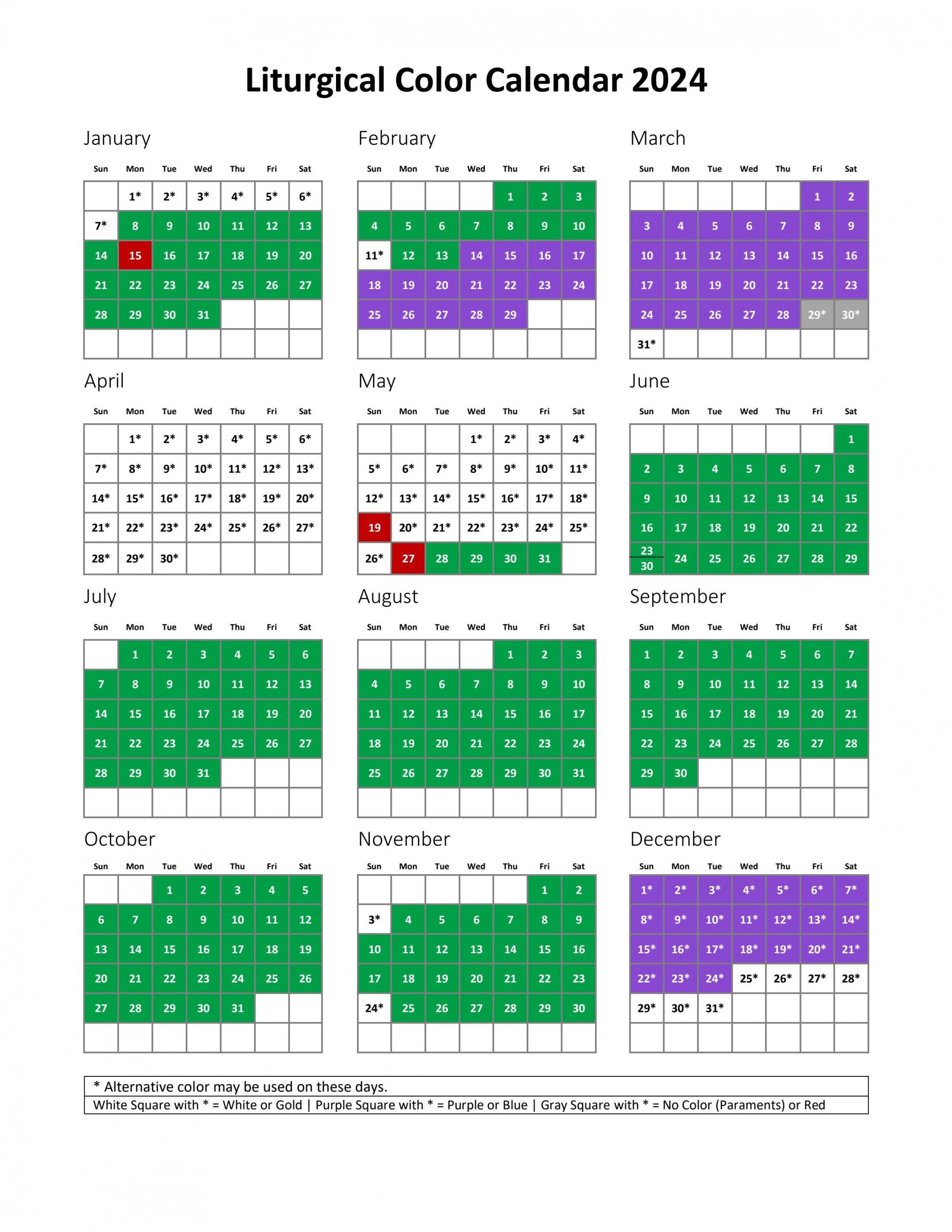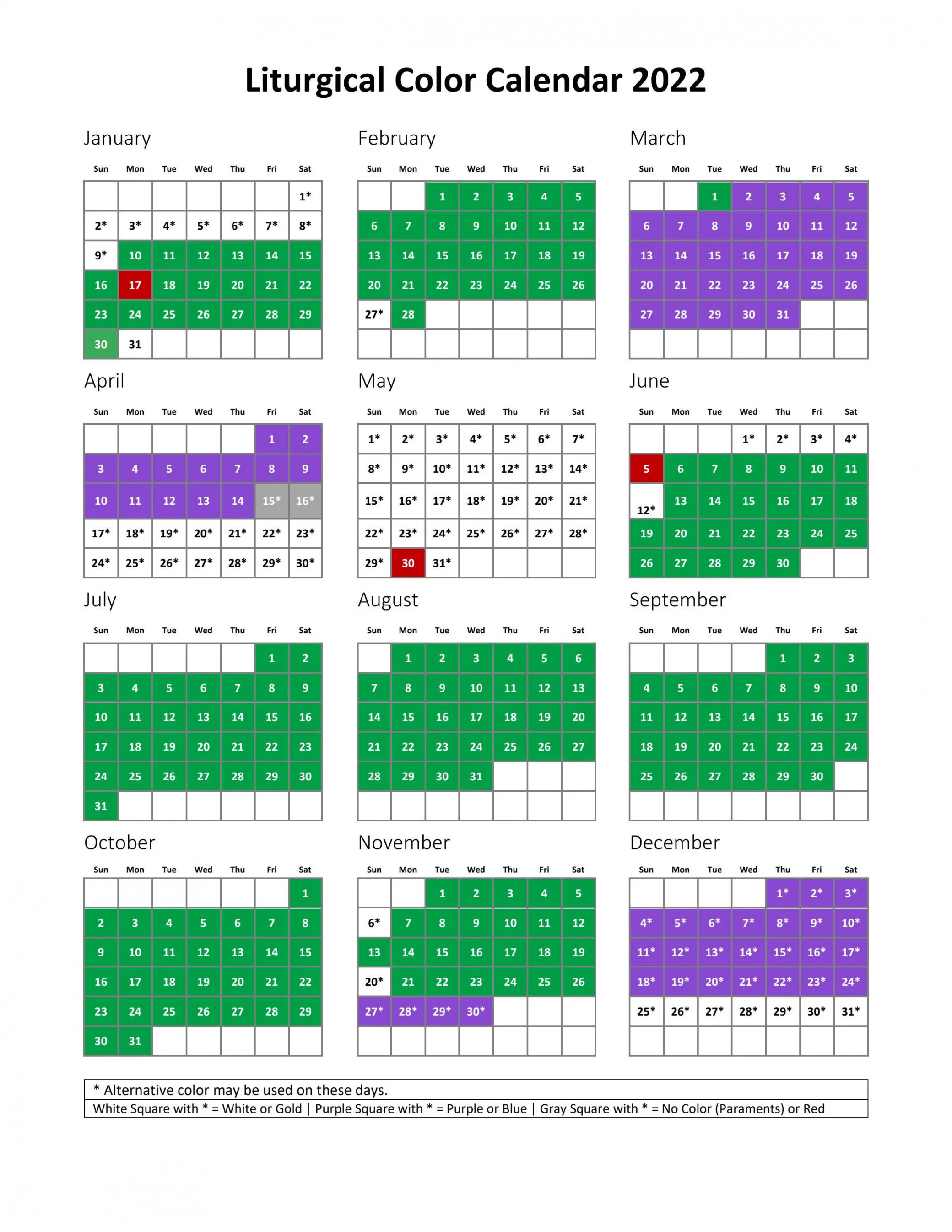Draping the Altar in Meaning: A Guide to Methodist Calendar Colors
Stepping into a Methodist church, your eyes might be drawn to the vibrant hues adorning the altar. These aren’t just decorative choices; they’re part of a rich tradition called liturgical colors, each shade carrying a deeper message tied to the church calendar. Let’s delve into the fascinating world of Methodist altar colors, their meanings, and how they weave faith and symbolism into the worship experience.

Imagine a grand tapestry woven with sunlight, hope, and reflection – that’s the essence of Methodist calendar colors. Each season and special occasion is assigned a specific hue, echoing its spiritual significance. Here are some key players:
![The Colors and Seasons of the Church Year [Infographic] Ashley The Colors and Seasons of the Church Year [Infographic] Ashley](https://blanktablecalendar.com/wp-content/uploads/2024/01/the-colors-and-seasons-of-the-church-year-infographic-ashley_1.png)
Purple: Royalty and repentance, marking seasons like Advent and Lent, periods of introspection and preparation.

These symbolic shades aren’t just splashed on paint. They adorn the altar space through beautiful fabrics called paraments, including altar cloths, pulpit scarves, and stoles worn by clergy. Imagine sunlight filtering through emerald green paraments during Ordinary Time, fostering a sense of renewal, or the warm glow of gold illuminating the altar on Christmas Eve, radiating the joy of Christ’s birth.

While not explicitly mandated in Methodist doctrine, the use of liturgical colors draws inspiration from ancient Christian traditions and symbolism. These colors have evolved over centuries, finding resonance with Methodists and enriching their worship experience.
So, why are these colors important? It’s about creating a tangible connection between the liturgical calendar and the faith within. Each color acts as a visual cue, prompting deeper reflection and enriching the worship experience. The altar, adorned in its seasonal hues, becomes a focal point, drawing the congregation into the heart of the message being conveyed.
Understanding liturgical colors opens a door to a deeper appreciation of Methodist worship. It’s a language beyond words, speaking through vibrant hues and inviting personal contemplation. Whether you’re a lifelong Methodist or simply curious about this tradition, exploring the meanings behind these colors can add a fresh dimension to your understanding of faith and its expression.
From the somber purple of Advent to the triumphant red of Pentecost, Methodist calendar colors paint a vibrant tapestry of faith, hope, and reflection. They’re not merely decorative elements, but windows into the soul of the liturgical seasons, enriching the worship experience and offering a silent sermon through the language of color. So, the next time you step into a Methodist church, take a moment to appreciate the artistry adorning the altar. Let the colors whisper their stories, deepen your understanding, and draw you closer to the heart of your faith.
1. Do all Methodist churches use the same colors? While the core system is consistent, some variations might exist based on regional practices or denominational preferences.
2. What happens if the church can’t afford a full set of paraments? Creativity reigns! Some churches use simple fabrics or even flowers to represent the liturgical colors.
3. Can I incorporate these colors into my personal devotions? Absolutely! Using candles, scarves, or even artwork in liturgical colors can create a sacred space in your own home for prayer and reflection.
4. Are there any other traditions associated with liturgical colors? In some denominations, clergy might also wear vestments in the corresponding colors, further emphasizing the significance of the season.
5. Where can I learn more about Methodist liturgical colors? Your local Methodist church is a great resource, along with official Methodist publications and online resources dedicated to worship practices.
By delving into the world of Methodist calendar colors, you embark on a journey of discovering faith expressed through vibrant hues. Let these colors guide you to a deeper understanding and appreciation of the Methodist worship experience.